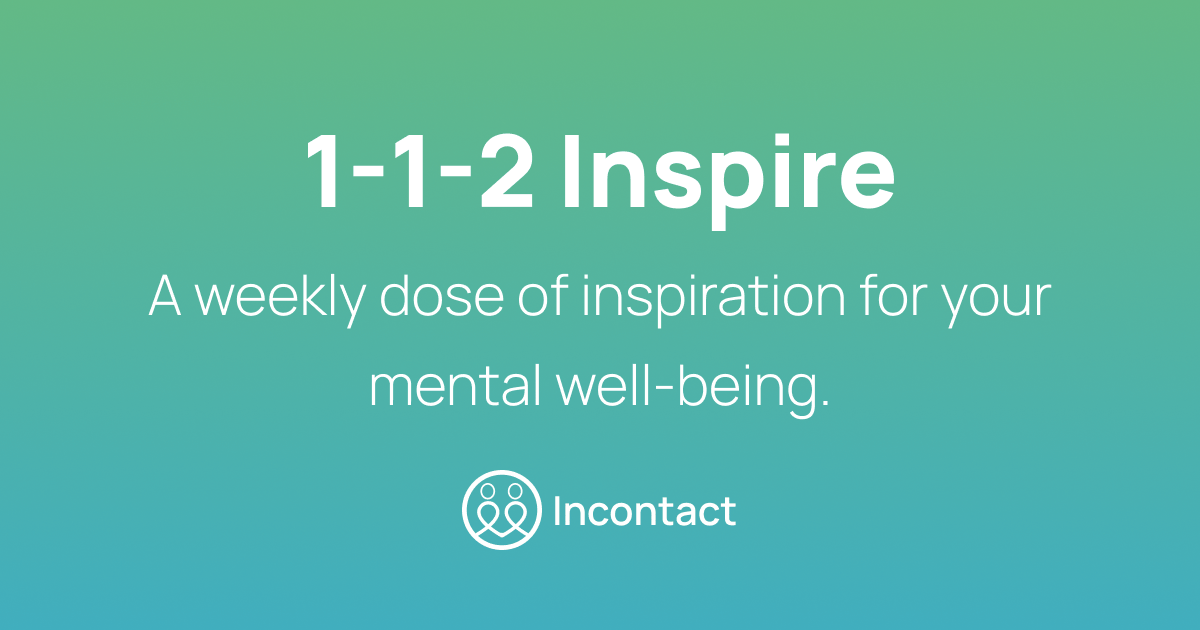- 1-1-2 Inspire
- Posts
- 1-1-2 Inspire: The quiet power of nuance
1-1-2 Inspire: The quiet power of nuance
Edition #21

Hi there, I’m Aarti, Founder and Lead Counsellor at Incontact.
Over the years, I’ve come to believe that what makes therapy powerful isn’t just training or theory. It’s the human presence that holds those tools.
Clients don’t come looking for textbook expertise. They come looking for resonance—for the sense that the person sitting across from them gets it, not only because they’ve studied it, but because they’ve felt it.
This week’s edition of 1-1-2 Inspire explores the profound role of nuance—how our histories shape the healing space, and why our humanness is the very thing that makes transformation possible.
1 Story—What lives in the room, beyond what’s said
When someone first sits down in the therapy room, the connection doesn’t begin with words. It begins with feeling—the tone of a greeting, the quality of presence, the brief moment of silence before a response.
Clients often scan for something deeper than credentials. They’re looking for subtle signals:
Does this person feel like they’ve held heartbreak, not just studied grief?
Is there something in their stillness that says: I’ve been where you are?
Do they carry a warmth that isn’t performative but lived-in?
These are not things you learn in training manuals. They emerge from lived experience—what I call nuance.
Nuance is not the same as bias or projection. It’s the emotional intelligence accumulated through a life actually lived:
The grief that softened your judgments.
The illness that taught you to listen to fatigue.
The immigration that rewired your sense of identity.
The faith or philosophy that reordered your responses to suffering.
It’s in the pacing of your questions.
The silence you don’t rush.
The wordless recognition that passes between people who share even a sliver of the same struggle.
In therapy, nuance becomes the invisible thread that weaves safety.
Nuance is what allows a client to lower their guard—not just because you’re the professional, but because something in you mirrors something in them.
That is when therapy moves from being transactional to transformational.
This is not about oversharing or self-disclosure. In fact, nuance often works best in silence. It’s felt, not told. A look. A pause. A knowing that doesn’t need translation.
For example, when someone speaks of chronic exhaustion—not just tiredness, but the soul-weary kind—you can’t fake knowing what that is. If you’ve lived it, even briefly, your presence communicates something textbooks cannot: You’re not exaggerating. I believe you.
Or when a client unpacks the contradictions of being bicultural, or the burden of being the “strong one” in every room, or the strangeness of healing in a language that isn’t your first—you don’t need the same life story to connect. But some shared resonance—of being misunderstood, displaced, or quietly resilient—lets you hear them with more depth.
This is the dance of nuance:
Two people, shaped by very different lives, meeting in a space where their histories don’t cancel each other—they co-create something new.
And it is often in that new, shared space where change becomes possible.
Not because one person fixed the other, but because two people witnessed something together that neither could have seen alone.
1 Takeaway—Your humanness is not a distraction. It’s the medium.
In a world that often demands therapists (and helpers of all kinds) to be neutral, perfect, and polished, it can be easy to forget that your most powerful tool is you—your presence, your integrity, your attunement.
Your professional boundaries are important. But your lived experience—your nuance—is not something to hide.
It’s what helps you feel the unsaid. What makes your silence comforting, not cold. What turns a good-enough session into a moment of deep connection.
You don’t have to have lived every experience to be effective. But your own history teaches you how to be human with another.
Protect your privacy, yes. But don’t sterilize your presence. When done with care, your nuance doesn’t dilute the work—it deepens it.
2 Tools—Tuning into and honouring nuance
Do a “nuance inventory”
Reflect on five personal experiences that have shaped how you show up with others. They don’t have to be dramatic—just real.
Ask yourself:
What did this teach me about pain, resilience, or presence?
How does this show up in the way I respond, even silently?
This helps you become more conscious of what’s already informing your work.
Practice resonant listening
The next time someone shares something personal, don’t rush to empathize or problem-solve. Instead, pause and silently ask:
Where does this land in me? What lived truth is this brushing up against?
This practice increases depth of connection—not by making it about you, but by allowing your presence to be more grounded and attuned.
Nuance is not noise in the room. It’s music.
It’s the quiet evidence of a life lived with awareness. And when shared with integrity, it becomes the bridge between insight and trust.
Let your training guide you. But let your humanity be felt, too. That’s where real transformation begins. ❤️
Warm wishes,
Aarti
Reply